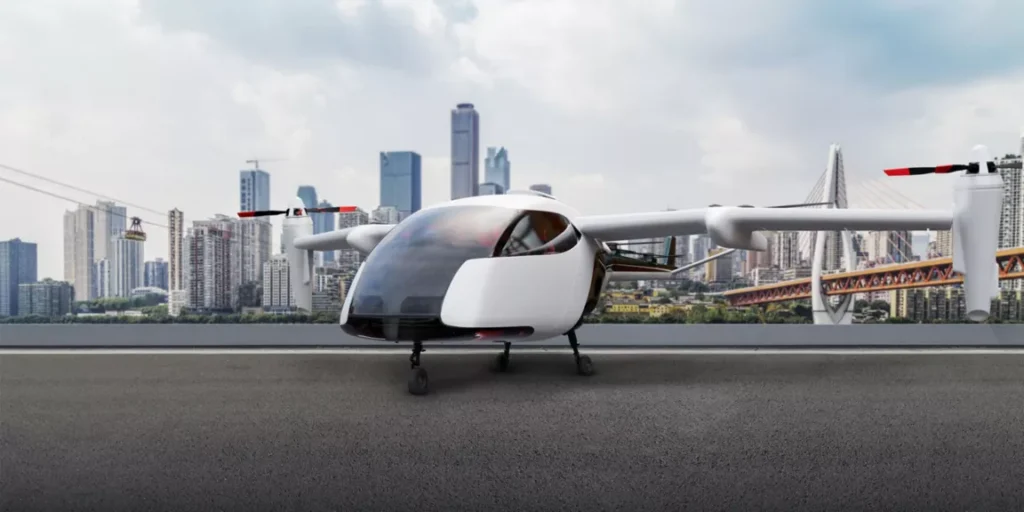The Future of Autonomous Urban Air Mobility (UAM)

Urban Air Mobility (UAM) represents a significant shift in the transportation landscape, promising to alleviate urban congestion, reduce travel times, and provide new mobility options in increasingly crowded cities. Autonomous UAM, which involves the use of pilotless air vehicles, is poised to revolutionize how people and goods move through urban environments. This blog explores the potential of autonomous UAM, the technologies driving it, the challenges it faces, and its future prospects.
The concept of UAM involves the integration of air transportation into urban and suburban environments, utilizing vertical takeoff and landing (VTOL) aircraft. These vehicles, often electric-powered, are designed to operate from small airfields or even rooftops, allowing for flexible and efficient transportation. Autonomous UAM takes this concept a step further by removing the need for human pilots, relying instead on advanced sensors, artificial intelligence (AI), and robust communication networks to navigate and operate safely.
Key technologies driving the development of autonomous UAM include AI, machine learning, and sensor fusion. AI algorithms enable autonomous vehicles to process vast amounts of data from sensors, such as cameras, LIDAR, and radar, to understand their environment, make real-time decisions, and navigate complex urban landscapes. Machine learning models help improve these algorithms over time by learning from operational data, enhancing the safety and efficiency of autonomous flights. Sensor fusion combines data from multiple sensors to create a comprehensive understanding of the vehicle’s surroundings, ensuring accurate and reliable navigation.
One of the primary benefits of autonomous UAM is the potential to significantly reduce traffic congestion in urban areas. By taking to the skies, UAM can bypass ground-level traffic, offering faster and more direct routes. This can lead to shorter travel times, especially for trips across congested city centers. Additionally, UAM can provide new transportation options for underserved areas, improving accessibility and connectivity.
The environmental impact of autonomous UAM is another significant advantage. Many UAM vehicles are designed to be electric, producing zero emissions during flight. This can contribute to reducing the overall carbon footprint of urban transportation, especially when compared to traditional gasoline-powered vehicles. Furthermore, the quiet operation of electric UAM vehicles can minimize noise pollution, which is a major concern in densely populated urban areas.
Despite its promise, autonomous UAM faces several challenges. One of the most significant is the regulatory environment. Current aviation regulations are primarily designed for traditional aircraft and may not adequately address the unique requirements of autonomous UAM. Regulatory bodies such as the Federal Aviation Administration (FAA) in the United States and the European Union Aviation Safety Agency (EASA) are working to develop new frameworks and standards for UAM operations, but this process is complex and time-consuming.
Safety is another critical concern. Ensuring the safe operation of autonomous UAM vehicles in busy urban airspace requires robust systems for collision avoidance, emergency landing, and system redundancy. The technology must be proven to operate reliably in various weather conditions and handle unexpected events, such as mechanical failures or cyber-attacks. Building public trust in the safety of autonomous UAM is essential for widespread adoption.
Infrastructure development is also a key challenge. UAM requires the creation of vertiports—specialized facilities for takeoff, landing, and charging or refueling UAM vehicles. These vertiports need to be strategically located to maximize efficiency and accessibility while minimizing disruption to existing urban infrastructure. Integrating vertiports into city planning and development requires collaboration between urban planners, transportation authorities, and private companies.
The cost of developing and deploying autonomous UAM is another barrier. The technology is still in its early stages, and significant investment is needed to advance vehicle design, build infrastructure, and create regulatory frameworks. However, as technology matures and economies of scale are realized, costs are expected to decrease, making UAM more accessible and affordable.
The future prospects for autonomous UAM are promising. Major companies, including aerospace giants like Boeing and Airbus, as well as tech firms like Uber and Google, are investing heavily in UAM research and development. These efforts are supported by numerous startups and academic institutions exploring various aspects of UAM technology and operations. Pilot projects and test flights are already underway in cities around the world, providing valuable data and insights for the development of scalable UAM systems.
In the coming years, we can expect to see significant advancements in autonomous UAM technology and infrastructure. Improvements in battery technology and electric propulsion will enhance the range and performance of UAM vehicles, while advancements in AI and machine learning will improve the safety and reliability of autonomous operations. The development of integrated transportation networks that combine ground and air mobility solutions will further enhance the efficiency and convenience of urban transportation.
Public acceptance will play a crucial role in the success of autonomous UAM. Effective communication and engagement with communities, along with transparent safety standards and regulations, will help build trust and confidence in this new mode of transportation. As autonomous UAM becomes more prevalent, it has the potential to transform urban mobility, offering faster, greener, and more efficient transportation options for people and goods in cities around the world.
Stay ahead with ITBusinessNews – Your trusted source for Technology and Business news. Fast & Precise




